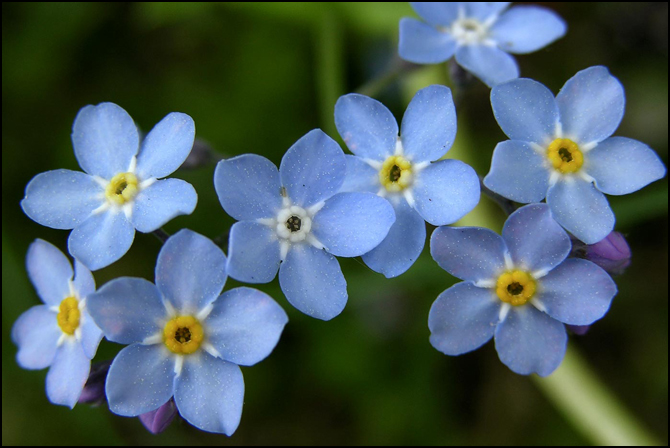Crystallization-Study of First and Second Kings
Message Seven
The Intrinsic Significance of the Materials of the Temple
OPENING WORD OF THE PROPHESYING MEETING
Reading the verses in each day.
Reading the main points in the outlines.
Pray-reading the verses:
1 Kings 6:15 And he built the walls of the house within with cedar boards; from the floor of the house to the wall of the ceiling he covered them on the inside with wood. And he overlaid the floor of the house with boards of cypress.
Rom. 11:17 …And you, being a wild olive tree, were grafted in among them and became a fellow partaker of the root of fatness of the olive tree.
1 Kings 6:7 …the house, when it was being built, was built of finished stone…
Word of Appetizer
What are the five materials of the temple? What does this mean?
The materials used in the temple are cypress, cedar and olive wood, bronze and stone. The different kinds of wood used in the building of the temple signify different aspects of Christ’s humanity. In ancient times the Jews planted cypress trees above their graves; hence, cypress signifies Christ’s humanity in His death, the crucified Jesus. Cedar trees grew on the mountains of Lebanon; thus, cedar signifies Christ’s humanity in resurrection, the resurrected Christ. Olive oil typifies the Spirit of God; hence, olive wood signifies Christ’s humanity in the Spirit of God, the anointed Christ.
The pillars of the temple were built of bronze, signifying God’s judgment. The stones of the temple signify Christ’s humanity in transformation, the transformed Christ.
Spiritual Burden
The real Christian life for the building up of the church as the temple of God is a life of the crucified and resurrected Christ as the life-giving Spirit being built into our being so that we are being conformed to His death by the power of His resurrection to be renewed day by day and transformed from glory to glory for His glory in the church.
Concluding Word of the Prophesying Meeting
The Revelation of the Truth
In order to become materials for God’s building, we need to experience Christ in His death (signified by cypress), Christ in His resurrection (signified by cedar), and Christ as the Spirit (signified by olive wood).
Cypress signifies the crucified Christ; Cedar signifies the resurrected Christ; Olive wood signifies the transformed Christ as the life-giving Spirit.
The pillars of the temple were built of bronze, signifying God’s judgment.
The stones of the temple signify Christ’s humanity in transformation, the transformed Christ.
The Experience of Life
In order to become materials for God’s building, we need to experience Christ in His death (signified by cypress), Christ in His resurrection (signified by cedar), and Christ as the Spirit (signified by olive wood).
The pillars of the temple were built of bronze, signifying God’s judgment. Through the crossing out of the checker work and the restriction of the chain work, we can live a pure, simple life of trusting in God to express the riches of the divine life of Christ for God’s building in life.
Practice and Application
We need to allow the crucified and resurrected Christ as the Spirit to build Himself into our being so that we can have the fullest enjoyment of Christ in order to be good stewards of the varied grace of God (the rich supply of life) for the building up of the church as the temple of God。
In order to experience being cut off from our old manner of life and to enjoy the experience of being grafted into Christ, we need to exercise our spirit to call on His name and pray-read His Word.
PROPHESYING TOPICS—TWELVE TOPICS PER WEEK
Day 1
T1 Three kinds of wood were used in the temple: cypress, cedar, and olive wood (1 Kings 6:15)
(Please illustrate that the inner meaning of the three kinds of wood were used in the temple.)
T2 The church is not composed of natural persons but of persons who have passed through death and entered into resurrection, that is, persons who are as cypress and cedar (Eph. 2:4-6)
(Please illustrate that in us, the saved ones, we can see our death with Christ, our resurrection with Christ, and our receiving the Holy Spirit with Christ.)
Day 2
T1 On the wooden wainscoting, cherubim and palm trees were carved (1 Kings 6:34-35)
(Please illustrate the spiritual significance of the cherubim and palm trees being “carved” into.)
T2 A picture of Israel in the restoration (Matt. 19:28; Hosea 14:5-6)
(Please illustrate that in Hosea 14:4-8 we have a picture of Israel in the restoration.)
Day 3
T1 The fatness of the olive tree is the riches of Christ (Rom. 11:17; 1 Cor. 15:45b)
(Please illustrate that if we desire to partake of the riches of Christ, we need to contact the life-giving Spirit.)
T2 To be grafted into Christ is not to be taught by Christ but to be joined to Christ organically (Rom. 6:17; 2 Tim. 4:22)
(Please illustrate that our being grafted into Christ is a matter of our being joined to Christ in our spirit.)
Day 4
T1 The significance of the olive tree and the vine (Judg. 9:13)
(Please illustrate the significance of the olive tree and the vine.)
T2 The more we breathe Christ, the more we partake of and enjoy His riches (Eph. 6:17)
(Please illustrate that how we can try to cut ourselves off from all the old things.)
Day 5
T1 Bronze, signifies God’s judgment (1 Kings 7:15)
(Please illustrate that the pillars were made of bronze clearly indicates that we must realize that we are those under God’s judgment.)
T2 In us, that is, in our flesh, there is nothing good (Rom. 7:18)
(Please illustrate that all those who became a true profit to the building of the church were those who did not think of themselves as being qualified for leadership.)
Day 6
T1 The significance of stones (1 Kings 6:7; 1 Pet. 2:4-5)
(Please illustrate that the stones signify the transformed Christ, and also signify the believers in Christ who have been transformed by Christ as the stone.)
T2 The stones that was used for the building of the temple were cut in a mountain quarry in the wilderness with much effort (1 Kings 5:15; 1 Pet. 2:5)
(Please illustrate that the stones used for the building of the church must be living inwardly and must be cut outwardly.)



